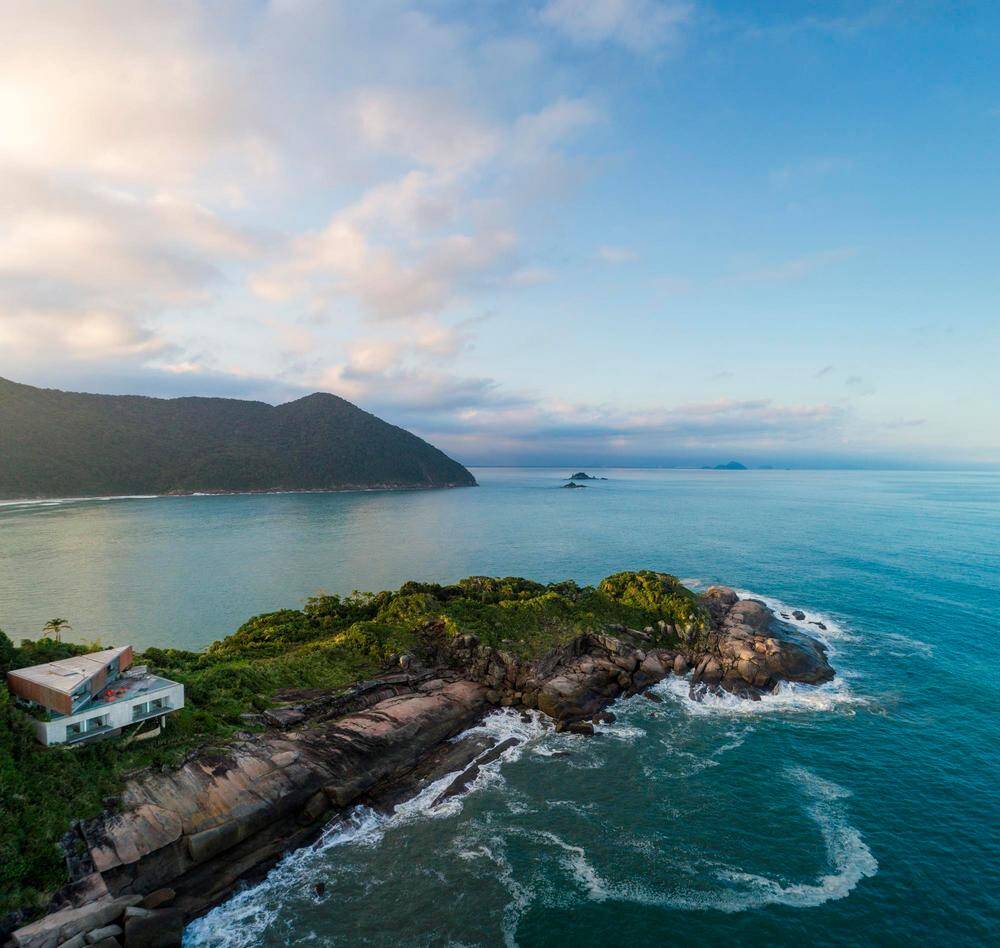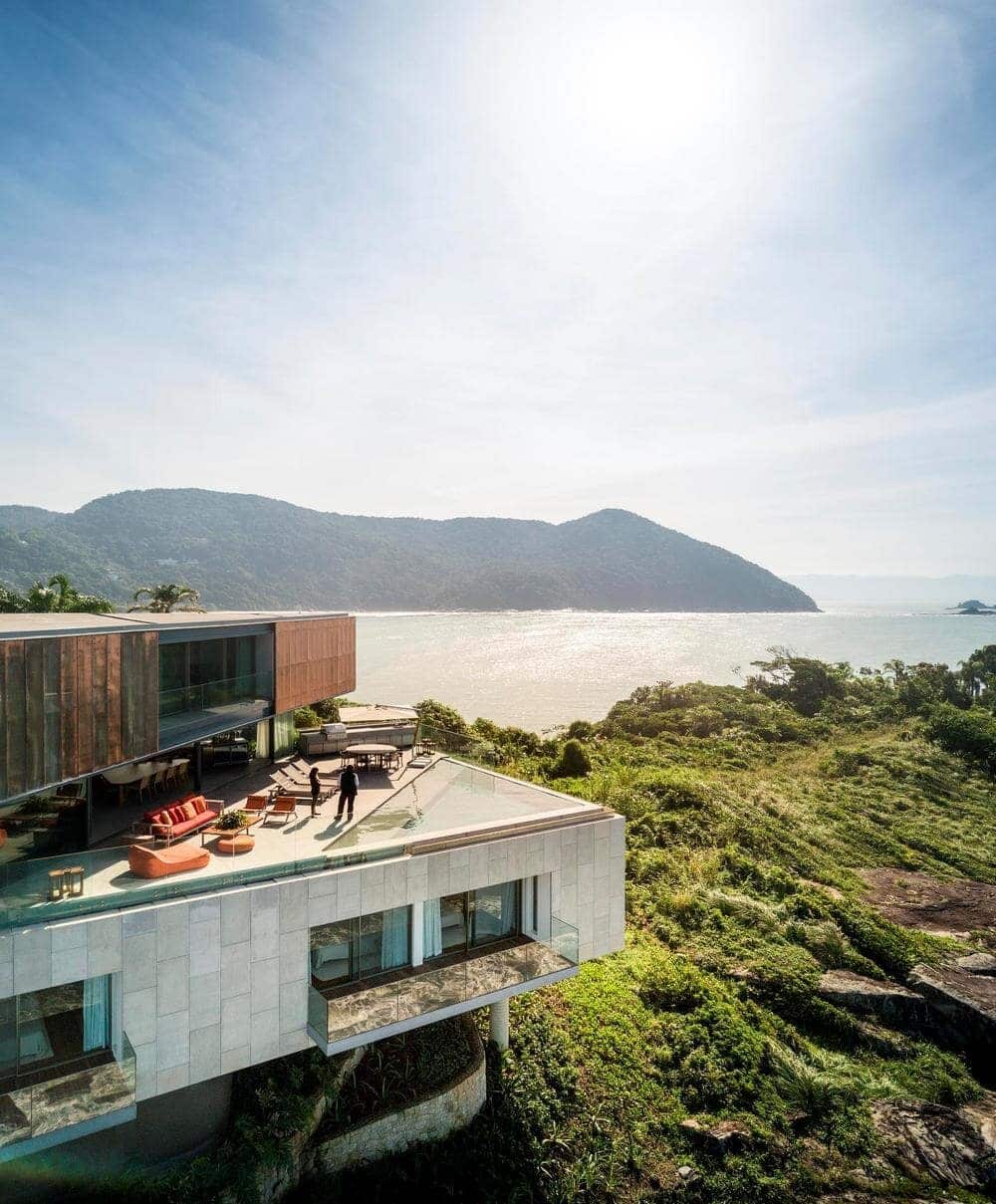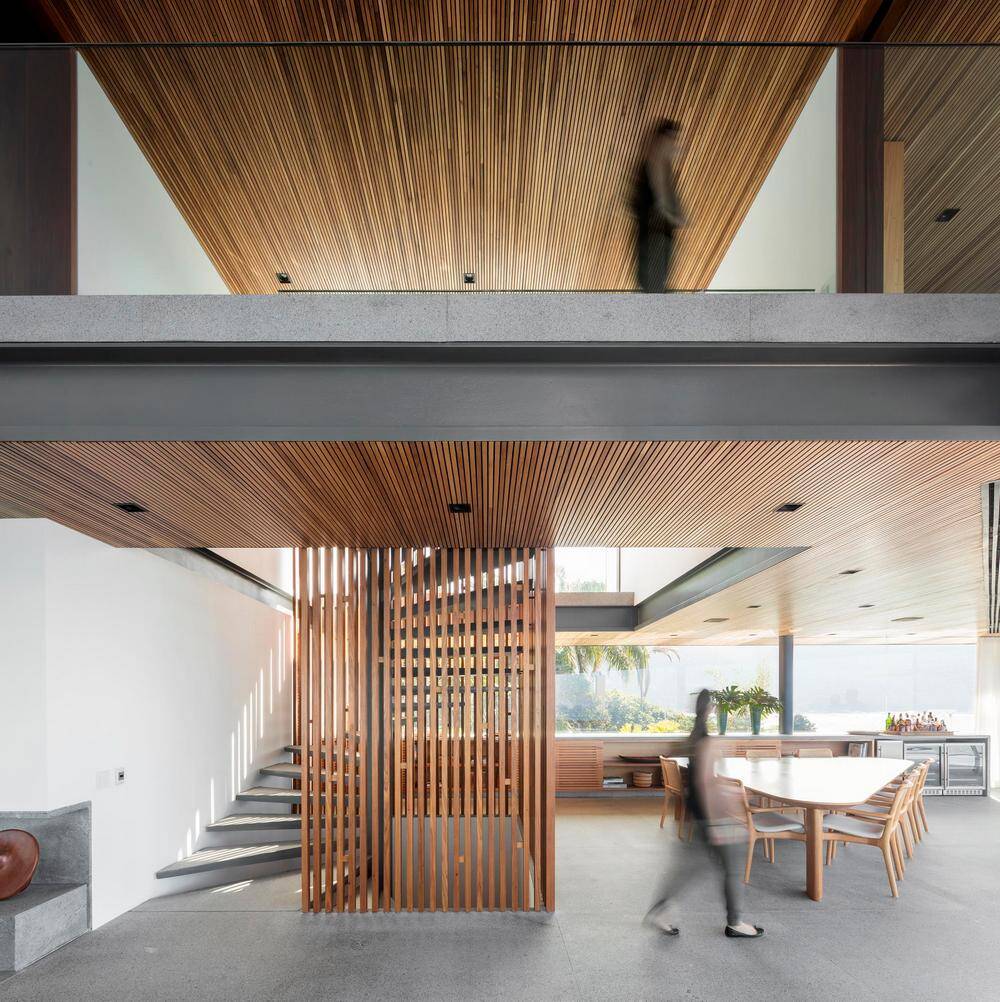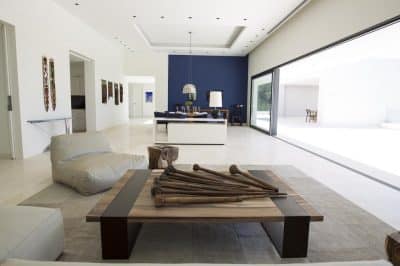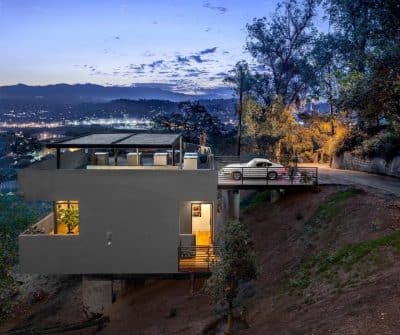Project: Peninsula Weekend House
Architects: Bernardes Arquitetura
Team: Thiago Bernardes, Dante Furlan, Camila Tariki, Fausto Sombra, João Faim, José Miguel, Marcelo Dondo, Ana Paula Endo, Antonia Bernardes, Marina Salles, Mariana Cohen
Landscape architecture: Cenário
Lighting: Estúdio Carlos Fortes Luz + Design
Location: Guarujá, SP, Brazil
Area: 850 m2
Photo Credits: Fernando Guerra
Text by Bernardes Arquitetura
Peninsula Weekend House, a home in a coastal city, explores an intriguing relationship between the privacy and domesticity of its residential program and natural setting. Located at the edge of a gorgeous peninsula on the São Paulo coast, the setting is both widely open to the landscape while being entirely exclusive to the house. There are very few obstacles between the interior, private spaces of the house and the outdoors. This condition allowed the house to offer a level of openness of domestic spaces that a regular, urban one would not be able to.
The Peninsula Weekend House is composed of three stacked abstract volumes which have been delicately positioned on a steep slope overlooking the Atlantic Ocean for minimum topographic impact. It is divided in three parts: the rectangular base and the triangular superior volume, which have more private areas; and the transparent space in-between them where the common areas are located. The suspended triangular volume creates shaded balconies protected from direct sunlight, while the more enclosed and monolithic base provides more intimate spaces. The tension between the two creates negative transparent spaces that visually connect with the landscape.
The interior design was thought to be as pure and simple as the forms of architecture. The team selected furniture by famous Brazilian designers, mostly produced in wood, to compose the surroundings next to the furniture designed especially for the house. Few materials were used to create a quiet and cozy atmosphere, among them, Brazilian freijó wood, which is one of the most prominent materials used in linings, panels and joinery.
The main access is through the ground floor of the basement, where the home theater and the four guest suites are located. It is the most intimate area of the residence. The first floor is the space of social and leisure use, with living room, a small kitchen, balcony and swimming pool. The interior space is fluidly integrated into the exterior, thanks to glass frames and the continuity of the stone used on the floor. The first floor was designed in such a way that it could establish itself as an emptiness between the basement and the triangular volume of the second floor, a large balcony that serves as a meeting point for the whole family.
The second floor has a triangular plant due to the study of insolation. The diagonal was drawn in a north-south direction, so that the facade faces east. At this level are located the master suite and the son’s suite. In addition, these environments are privileged with the best view of the sea. Copper was chosen for the facade because it is a material that will react well to the passage of time. This suspended volume has one of the edges in a large cantilever of nine meters towards the sea, reminding of a large boat. The project demonstrates a unique method to balance the abstract morphological requirements of the spatial concept of the house with the requirements of innovative structural and skin frameworks.

